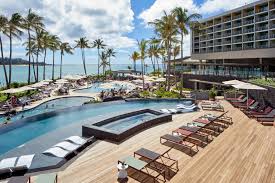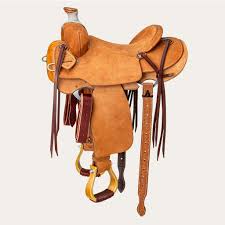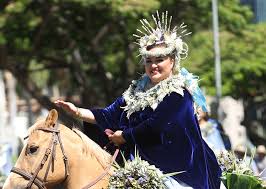Discover Paradise at Turtle Bay Resort on Oahu’s North Shore
Welcome to Turtle Bay Resort Oahu
Nestled on the legendary North Shore of Oahu, Turtle Bay Resort is a tropical paradise that offers a perfect blend of luxury, natural beauty, and Hawaiian hospitality. With stunning ocean views, pristine beaches, and lush landscapes, this iconic resort provides an unforgettable escape from the hustle and bustle of everyday life.
Whether you’re seeking relaxation or adventure, Turtle Bay has something for everyone. From world-class golf courses and surf breaks to horseback riding along the shoreline and hiking trails through scenic forests, there are endless opportunities to explore and enjoy the beauty of Hawaii’s North Shore.
Accommodations
The resort offers a variety of accommodations to suit every traveler’s needs, from spacious oceanfront suites to cozy beach cottages. Each room is elegantly appointed with modern amenities and traditional Hawaiian decor, providing a comfortable retreat after a day of exploration.
Dining
Indulge in a culinary journey at one of Turtle Bay’s renowned restaurants, where fresh local ingredients are expertly prepared to create delicious dishes that showcase the flavors of Hawaii. From casual beachside fare to fine dining experiences with panoramic ocean views, there’s something for every palate at Turtle Bay Resort.
Activities
Immerse yourself in the natural beauty of Oahu with a variety of activities available at Turtle Bay Resort. Snorkel in crystal-clear waters teeming with marine life, paddleboard along tranquil bays at sunrise, or simply relax by the pool with a refreshing cocktail in hand. The possibilities are endless at this tropical oasis.
Events & Weddings
Host your dream wedding or special event at Turtle Bay Resort, where stunning venues and impeccable service come together to create unforgettable moments. Whether you’re saying “I do” against a backdrop of swaying palms or celebrating a milestone occasion with loved ones, Turtle Bay offers the perfect setting for any event.
Plan Your Stay
Ready to experience the magic of Turtle Bay Resort on Oahu’s North Shore? Book your stay today and embark on a journey filled with relaxation, adventure, and memories that will last a lifetime. We look forward to welcoming you to our slice of paradise!
Frequently Asked Questions About Turtle Bay Resort Oahu: Cost, Ownership, Films, and More
- Is Turtle Bay worth the money?
- Who owns Turtle Bay Resort Oahu?
- Is Turtle Bay Resort all inclusive?
- What movie was filmed at Turtle Bay Hawaii?
- Is Turtle Bay beach open to the public?
- Who bought Turtle Bay Resort Oahu?
- Is Turtle Bay now the Ritz-Carlton?
- What is Turtle Bay famous for?
- Is Turtle Bay Resort 5 stars?
Is Turtle Bay worth the money?
Many visitors to Turtle Bay Resort Oahu find that the experience is well worth the investment. With its stunning ocean views, luxurious accommodations, top-notch amenities, and a wide range of activities to enjoy, Turtle Bay offers a unique and memorable retreat on the North Shore of Oahu. Whether you’re seeking relaxation, adventure, or a blend of both, the resort’s scenic beauty and exceptional service often exceed guests’ expectations, making it a worthwhile choice for those looking to immerse themselves in the natural splendor of Hawaii.
Who owns Turtle Bay Resort Oahu?
Turtle Bay Resort Oahu is owned by Replay Destinations, a real estate development company based in Vancouver, Canada. Replay Destinations acquired the resort in 2017 with a vision to enhance and preserve the natural beauty of the property while providing exceptional hospitality experiences for guests. With a commitment to sustainable development and community engagement, Replay Destinations aims to continue Turtle Bay Resort’s legacy as a premier destination on Oahu’s North Shore.
Is Turtle Bay Resort all inclusive?
Turtle Bay Resort on Oahu is not an all-inclusive resort. While the resort offers a wide range of amenities, activities, and dining options for guests to enjoy, these services are typically not included in a standard room rate. Guests have the flexibility to choose which experiences they would like to partake in during their stay, whether it be dining at one of the on-site restaurants, participating in recreational activities, or booking spa treatments. This allows guests to tailor their vacation experience to their preferences and budget while still enjoying the luxurious accommodations and stunning surroundings that Turtle Bay Resort has to offer.
What movie was filmed at Turtle Bay Hawaii?
Turtle Bay Resort in Hawaii has been featured in several movies and TV shows, most notably the iconic film “Forgetting Sarah Marshall.” Released in 2008, this romantic comedy starring Jason Segel and Mila Kunis was filmed on location at Turtle Bay, showcasing the resort’s stunning natural beauty and tranquil surroundings. The movie’s picturesque scenes captured the essence of Hawaii’s North Shore, making Turtle Bay a popular destination for fans looking to experience the magic of this beloved film firsthand.
Is Turtle Bay beach open to the public?
One of the frequently asked questions about Turtle Bay Resort Oahu is whether Turtle Bay beach is open to the public. Yes, Turtle Bay beach is open to the public, allowing both resort guests and visitors to enjoy its pristine sands and turquoise waters. Whether you’re staying at the resort or simply looking for a day of relaxation by the ocean, Turtle Bay beach welcomes all to soak up the sun, swim in the clear waters, or simply take in the breathtaking beauty of Oahu’s North Shore coastline.
Who bought Turtle Bay Resort Oahu?
Turtle Bay Resort Oahu was purchased by the investment firm, Blackstone Group, in 2017. The acquisition marked a significant milestone for the iconic resort, bringing new opportunities for growth and development while maintaining its commitment to providing guests with a world-class experience on the North Shore of Oahu.
Is Turtle Bay now the Ritz-Carlton?
One frequently asked question about Turtle Bay Resort on Oahu is whether it is now the Ritz-Carlton. While there have been discussions and plans in the past regarding a potential rebranding of Turtle Bay Resort as a Ritz-Carlton property, as of the latest information available, Turtle Bay Resort remains an independent luxury resort on the North Shore of Oahu. The resort continues to offer its signature blend of Hawaiian hospitality, stunning accommodations, and world-class amenities to guests seeking an unforgettable experience in paradise.
What is Turtle Bay famous for?
Turtle Bay Resort on Oahu’s North Shore is renowned for its breathtaking natural beauty, world-class amenities, and legendary hospitality. This iconic resort is famous for its stunning ocean views, pristine beaches, and lush landscapes that provide a serene escape from the everyday hustle. With a rich history rooted in Hawaiian culture and traditions, Turtle Bay offers guests an authentic island experience unlike any other. Whether it’s relaxing on the beach, exploring the surrounding nature reserves, or enjoying a round of golf on one of the top-rated courses in Hawaii, Turtle Bay Resort is celebrated for providing an unforgettable tropical paradise for travelers seeking relaxation and adventure alike.
Is Turtle Bay Resort 5 stars?
The Turtle Bay Resort on Oahu is widely recognized as a luxurious destination that offers top-tier amenities and services. While the resort itself does not carry an official star rating system like hotels, it is often regarded as a 5-star property by guests and travel experts alike. With its stunning location on the North Shore of Oahu, upscale accommodations, world-class dining options, and a wide range of activities and facilities, Turtle Bay Resort consistently exceeds expectations and provides a truly exceptional experience for visitors seeking a premium getaway in Hawaii.





